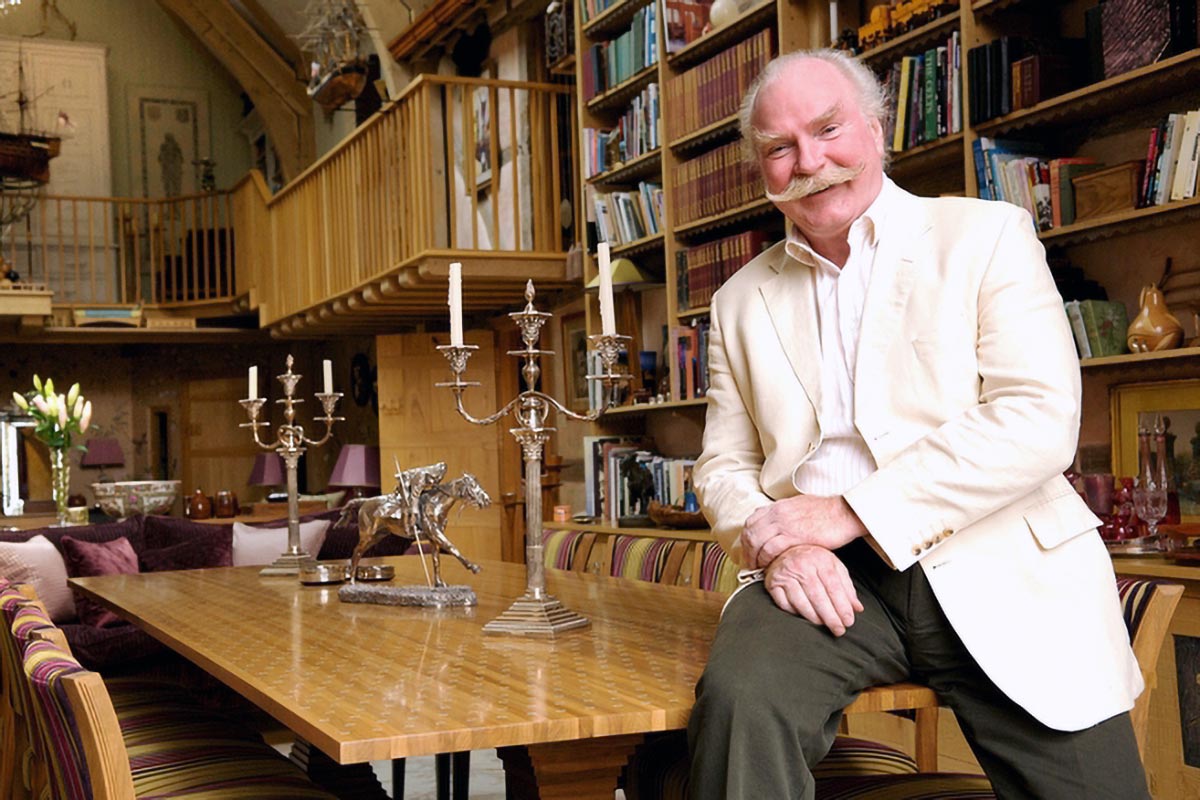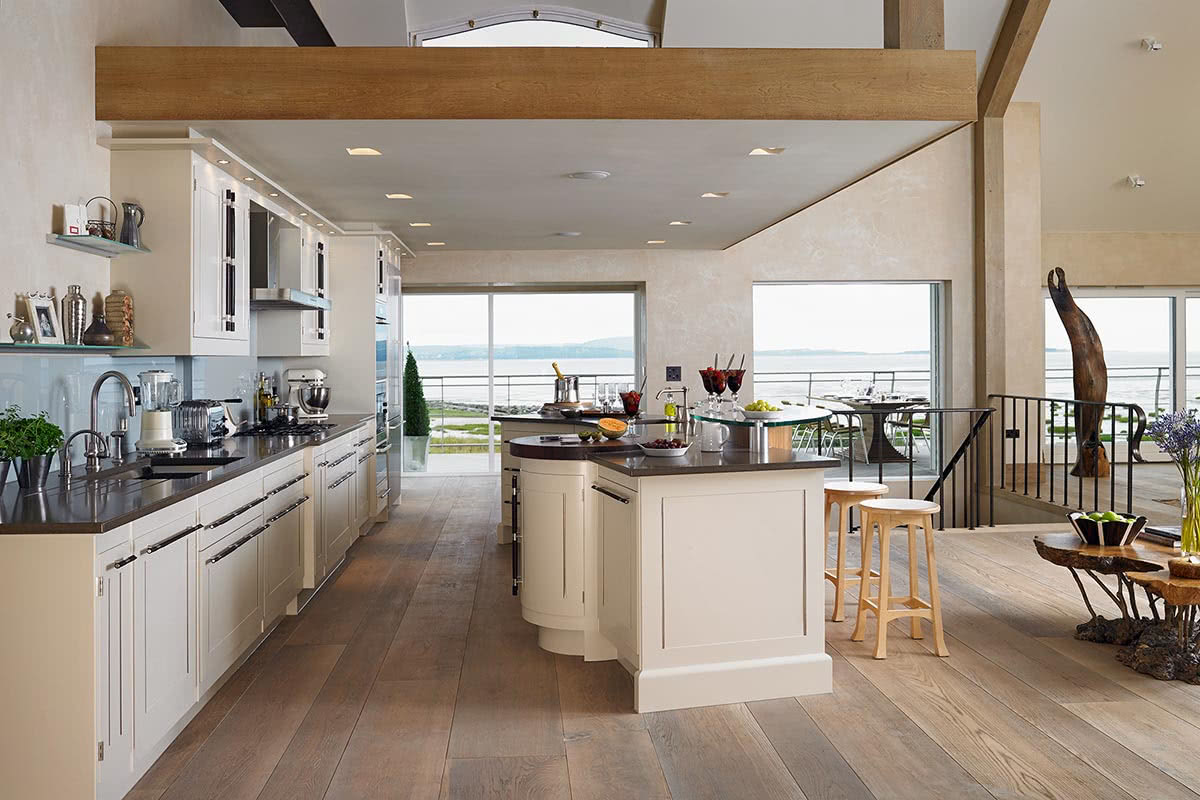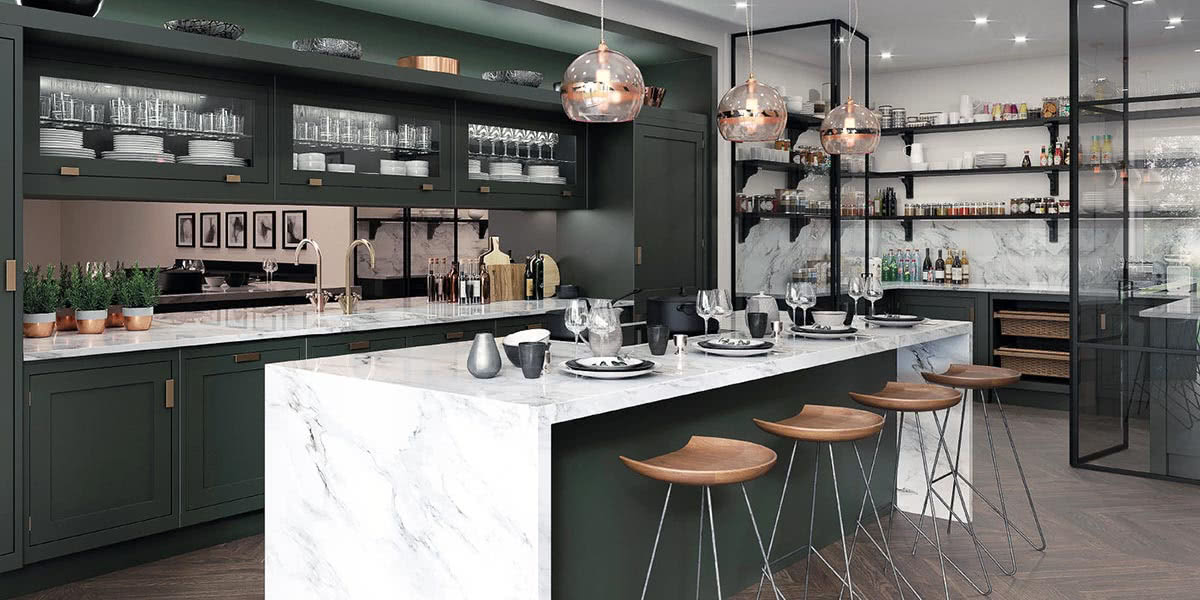With three huge dogs padding about, a few acres of green land for each, and a pantry stocked with cake from the neighbors, Mark Wilkinson’s home in the scenic village of Bromham in Wiltshire is every bit the idyllic country dream. It’s not the biggest house out there, nor the most expensive, but at this time of the year, with the sun shining and the lambs bleating in the fields, there is no more refreshing antithesis of oppressively urban London.
Needless to say, when I went for a jaunt out to the countryside, I was almost as eager to breathe the fresh air as to meet the man himself. Almost.
For those new to the name, Mark Wilkinson is arguably one of the most influential kitchen designers in the world. His beautiful aged pine designs were the basis on which the renowned Smallbone of Devizes was founded (Devizes being just down the road from Bromham), and since then, his eponymous practice has been creating bespoke kitchens for the most discerning of clientele (the kind that uses Chef’s kitchen knives).
It’s a reputation that you wouldn’t know to meet him. Despite his many accolades, an OBE amongst them, Mark’s affable demeanor and trademark mustache – a very impressive example– are nothing if not disarming. We started our morning together not with talk of design but with a coffee and a slice of the aforementioned neighbor’s cake. But then we started the tour.

First off, calling Mark Wilkinson a kitchen designer is like referring to Le Corbusier as a furniture maker. There’s barely a corner or floorboard that hasn’t been scoured by Mark’s creative eye. What started as a small farmer’s cottage dating way back into the misty history of England, the original house has become the kitchen of a stunning three-floored country house with more wonderful spaces than we had time to explore in one afternoon.
On every surface is some new little treasure, be it the opening wooden apple, a set of smoker’s tools, or a vertical jewelry box in the silhouette of Marylyn Monroe (somewhat of a signature piece for Mark). In each, the ingenuity of the design is as appealing as the consummate craftsmanship of each smoothed contour.
For me, the most impressive room in the house was the drawing room, a vast space complete with a towering window at one end and a bookshelf with rows upon rows of books and sculptures. A shelf with a roof jutting out at the top. “A shelf needs a cornice,” offers Mark, by way of explanation. “I wanted something to show that the wall was part of the original house, so I extended the roof. Even got some old guttering to complete the effect.”
While the feature certainly illustrates that certain eccentricity that makes Mark’s designs so inventive, it also highlights one more thing. Mark is not one to let things go to waste. “Someone I knew was clearing out an old factory that used to make piano keys,” Mark says, launching into an anecdote. “He found a load of these offcuts, the waste from cutting the keys. Well, you can’t sell ivory nowadays, so he asked if I’d like to take them off his hands.”
The veined ivory inlays zigzagging across the walls, not to mention the ebony and ivory bowls scattered around various tables, answer whether he did or not. Mark’s use of unusual, often discarded materials is a running theme. I’d call him a hoarder, except that he seems to use them as prolifically as he sources them. One picture frame, for example, was crafted from old rusted railway tracks. When I asked where he got them? “I traded them for some old railway sleepers I had.” Of course, he did.
Throughout my tour, we spent as much time discussing the merits of Game of Thrones as we did that of his OBE, at one time discussing the possibility of taking one of his guns out, another discussing making paints from lapis lazuli. However, as varied as our conversation and the various designs that spurred it on were, there’s also a more serious side to Mark Wilkinson’s design ethos than these idiosyncrasies. It would be easy enough for someone working in as many fields as Mark to become a bit stretched, a little too eclectic. How do you go from furniture to trinkets to interior architecture without it all feeling a bit disjointed?
“The trick is to find a style you like. It doesn’t matter what. Pick out the elements you like, the key motifs that appeal to you and stick to these. Use them in different ways – as many ways as you like – but stick to that one style and it just feels right.”
– Mark Wilkinson
For Mark, one artist that really strikes a chord is Tamara de Lempicka, the Polish Art Deco painter best known for her iconic rendition of Adam and Eve in the Garden of Eden. If your eyes are keen enough, you can spot this image rendered in glass throughout Mark’s house, lining the stairs and behind fig-leaf, door handles – “hiding their shame,” as Mark put it.
Some pieces, however, are distinctly Mark. One such is a huge scale model of the HMS Victory made for him by a friend, which we can only assume in exchange for some creation of Mark’s. After extolling the virtues of Nelson and the British navy of the 1800s, Mark showed me the finer details in the model. “It’s perfect in every detail. Every plank is perfect, and there are LED lights the exact size and brightness of the candles that would have lit the inside.” Mark’s own admiration of the piece was infectious. “There’s even Nelson’s portrait with his wife in the captain’s cabin. Though, in this case, it’s of me and mine instead.”

My tour of the rest of the house came out as somewhat of a blur – not because anything was monotonous, nor because there was nothing that particularly grabbed my attention. Quite the opposite. There was simply so much to take in, from cabinets inspired by native Indian tribal dress, complete with covered mirrors (so that they don’t steal your soul, of course), to arts and crafts style dressers, beautiful in their simplicity. Outside, a sort of all-purpose annex held a lengthy table made from a single plank of mahogany and opened geodes, amethyst innards gently glittering. Even the outdoor banisters are made from the same train rails as the picture frame.
The fact is, I could wax lyrical about the treasures that make up Mark Wilkinson’s home for probably far too long. Every nook and cranny reveals some new creation somehow drawn from the myriad ideas he seems to have. Yet even as we sat down to a late lunch of vegetable tart, salad, and pork pie, I still found it hard to believe that the amiable home cook had created such a cacophony of creations.
But the fact is that it is all these various influences, these different facets of Mark’s personality and design ethos, that are precisely what make his kitchens so sought after. After I’d managed to push the dogs away, said my goodbyes to Mark and his wife, and stepped over the mustache-shaped welcome mat to head back to the big smoke, it felt hard to leave that countryside ideal behind. Well, if a bespoke kitchen is the first step to achieving it, I’d best start saving.
This story was first published in April 2015.










